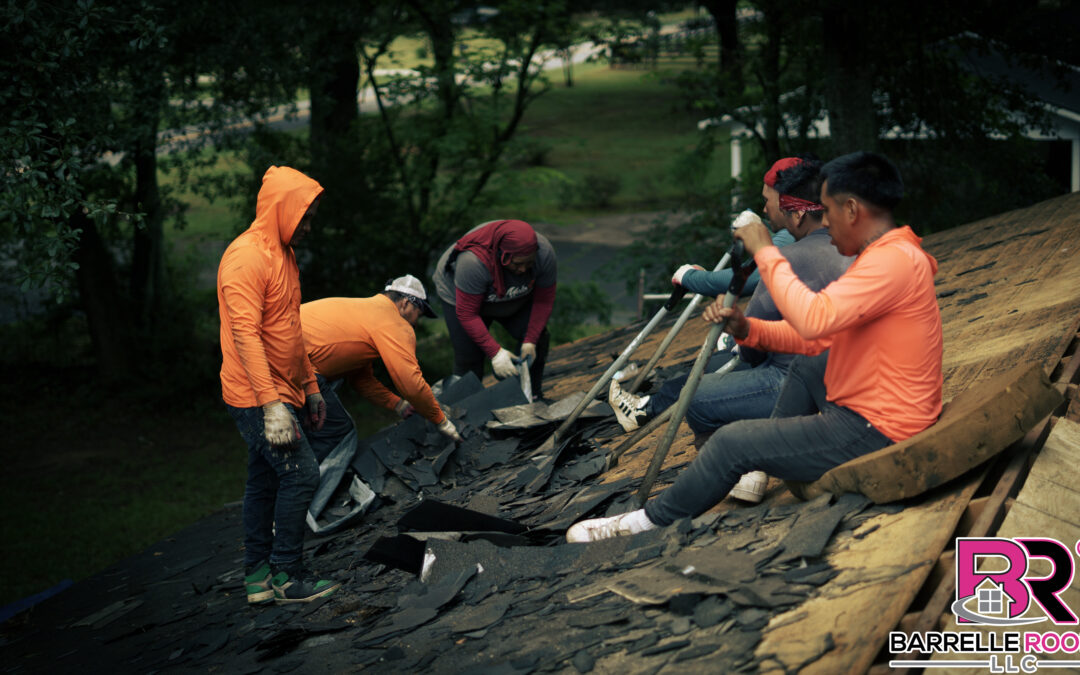Loganville Roof Replacement
Insurance companies are tightening the rules around roof repair and replacement coverage. Here are some key changes homeowners are seeing.

What’s Changing and Why
1. From Replacement Cost to Actual Cash Value (ACV)
Many insurers are shifting policies from full replacement‑cost coverage to Actual Cash Value. That means depreciation is deducted based on roof age—even if you renew yearly without filing claims. The result? Homeowners may receive far less than the cost to install a new roof and must make up the difference out of pocket.
2. Age‑based Coverage Limits and Deductibles
Roof age is becoming a major underwriting trigger. Many insurers now limit coverage for roofs older than 10 or 15 years—some will only pay for tear‑off costs if the roof is past a certain age. In severe weather zones, percentage‑based deductibles (1%–5% of dwelling coverage) are becoming more common. That can translate to $5,000–$10,000 minimum out of pocket—even before accounting for depreciation.
3. Use of Aerial Surveillance
Insurance companies increasingly rely on drones, satellites, and AI to assess roof conditions remotely. If a roof appears worn or damaged—even incorrectly flagged—homeowners may receive a letter demanding repairs or face policy non‑renewal, sometimes within just 30 days. Regulators in states like California are now scrutinizing insurers for acting on aerial imagery alone.
4. State-Specific Legal and Coverage Shifts
In states like Florida, legislative changes in 2025 allow insurers to deny coverage for roofs older than 15 years unless homeowners certify five years of remaining useful life—even if coatings or repairs were done. The statewide rule that previously required full replacement if more than 25% of the roof was damaged has been repealed, but older rules still affect how insurers enforce repairs and replacements. Meanwhile, new roofing laws require stricter roof-to-wall tie‑ins and tighter contract cancellation rules to protect homeowners following emergencies.
Why Many Homeowners Now Pay Full Retail for New Roofs
As a result of these policy changes, more homeowners are paying full retail rather than relying on insurance:
- Depreciation and deductibles eating into payouts. With ACV policies and high deductibles, the insurance check often falls well short of replacement cost.
- Age restrictions leaving homeowners exposed. If your roof is older than the insurer’s age limit, your policy may refuse to pay for replacement—even minor damage—forcing you to pay for replacements yourself.
- Coverage denials based on aerial assessments. Automated remote flags can trigger non‑renewal or demands for full roof replacement—even if shingles are intact.
- Regulatory changes in vulnerable states. In places like Florida, insurers can legally reject roofs that are older than 15 years or only accept documentation of remaining life rather than restored or coated systems.
- Rapid rise in storm damage cost and inflation. Severe weather—especially hail, windstorms and hurricanes—has driven claims costs up sharply. Underwriting losses have prompted insurers to tighten eligibility and coverage terms across the country.
Bottom Line: What Homeowners Should Know
Ultimately, many roofs that once would have been fully covered now qualify only for depreciated payouts—or no payout at all. This shift in insurance practices means:
- Homeowners must understand whether their policy uses replacement cost or ACV.
- High percentage deductibles in wind/hail zones can dramatically reduce or eliminate payout.
- Roof age thresholds can trigger non‑renewal or coverage limitations.
- Aerial surveillance may result in surprise coverage gaps or replacement demands.
- State laws (like Florida’s) can further restrict insurer obligations—even for newly repaired roofing.
For homeowners, that often means paying retail prices for roof replacement, even after making all required deductible contributions. The rising frequency and cost of climate-related events only amplifies this trend.
To avoid surprises, review your policy closely—or talk to your agent to confirm how your roof is covered and whether you might face high out‑of‑pocket costs when filing a claim.
Final takeaway: Insurance on roofs is changing fundamentally. Coverage is shrinking, deductibles are rising, and roofing technology (like drones) is reshaping how risk is assessed. As a result, many homeowners find themselves footing the retail bill for roof repairs or replacements—often because their insurance no longer covers the full cost.
